Full text
PDF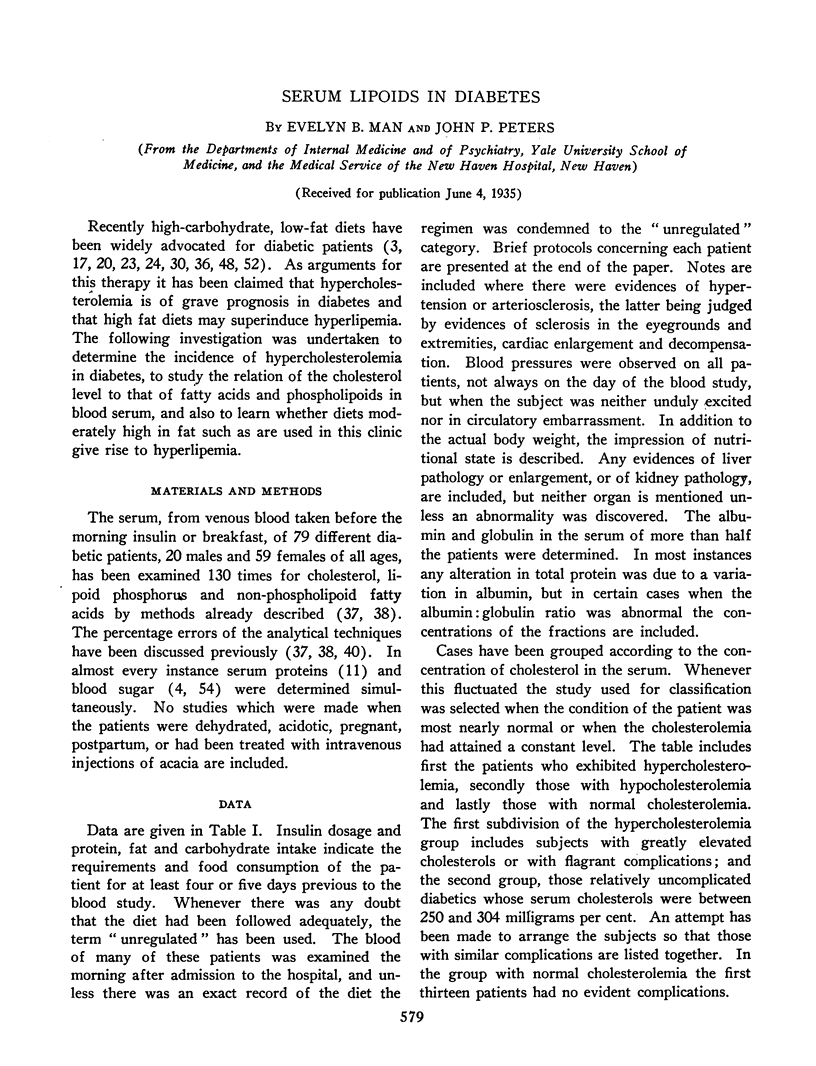
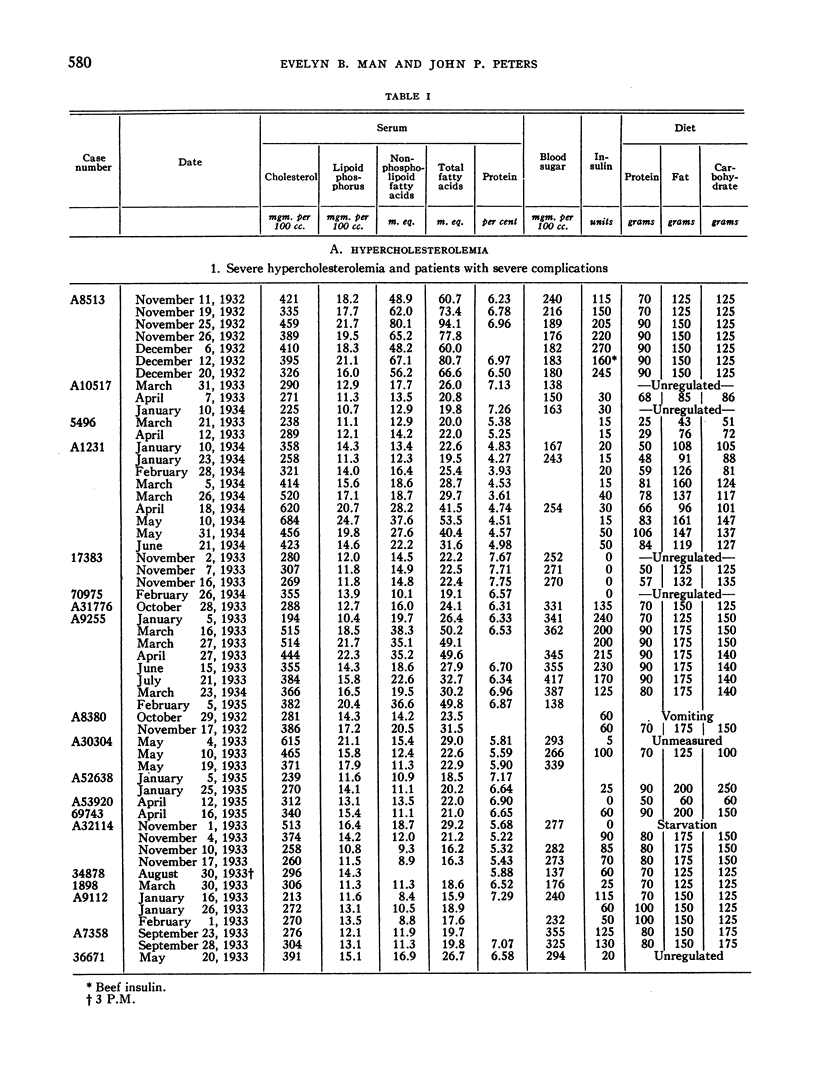
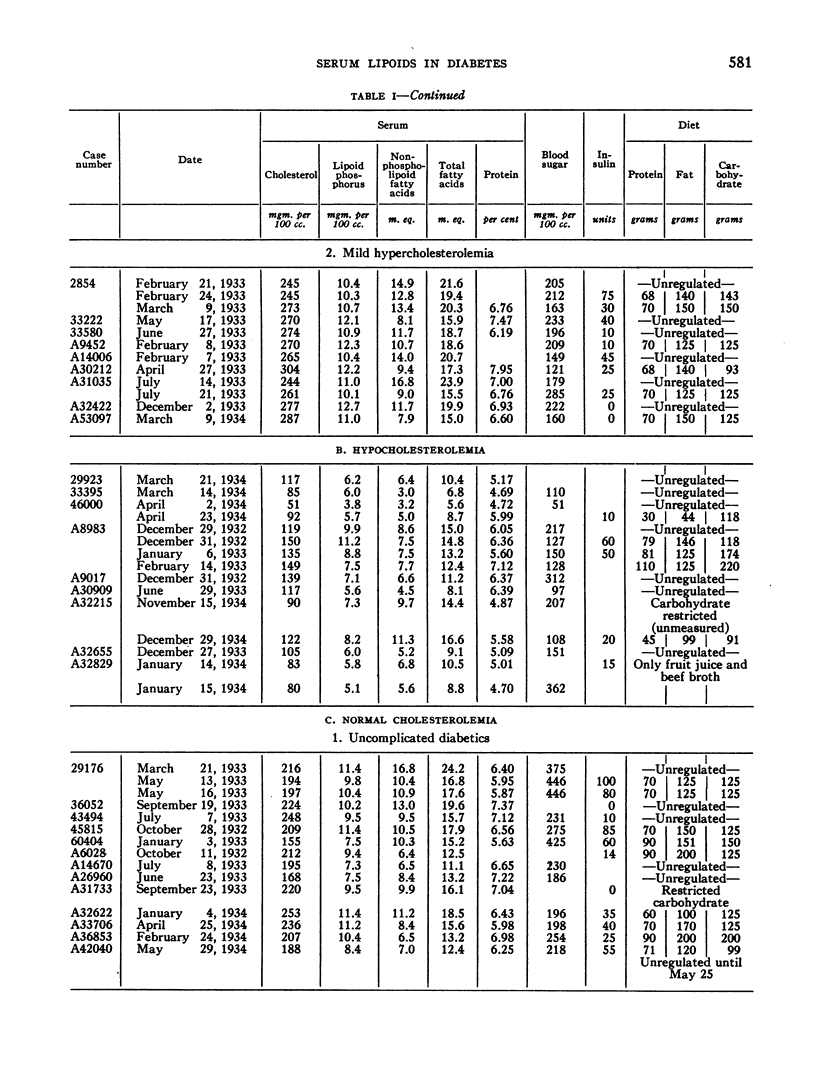
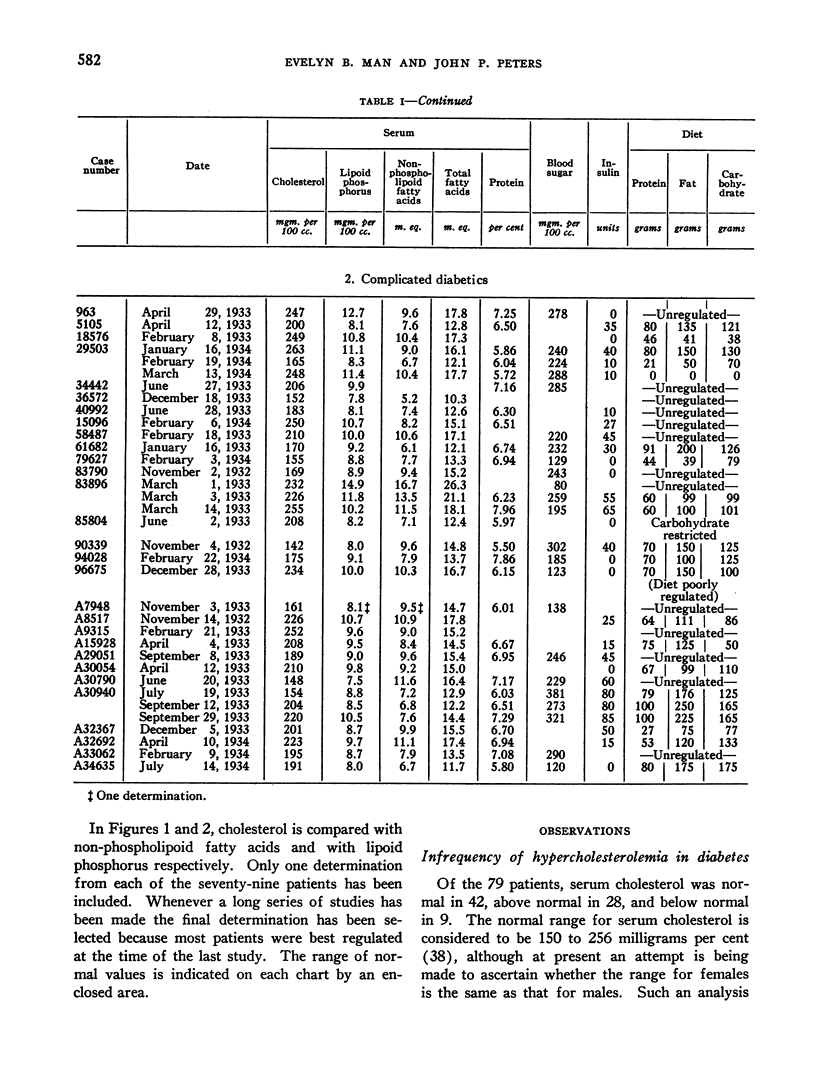
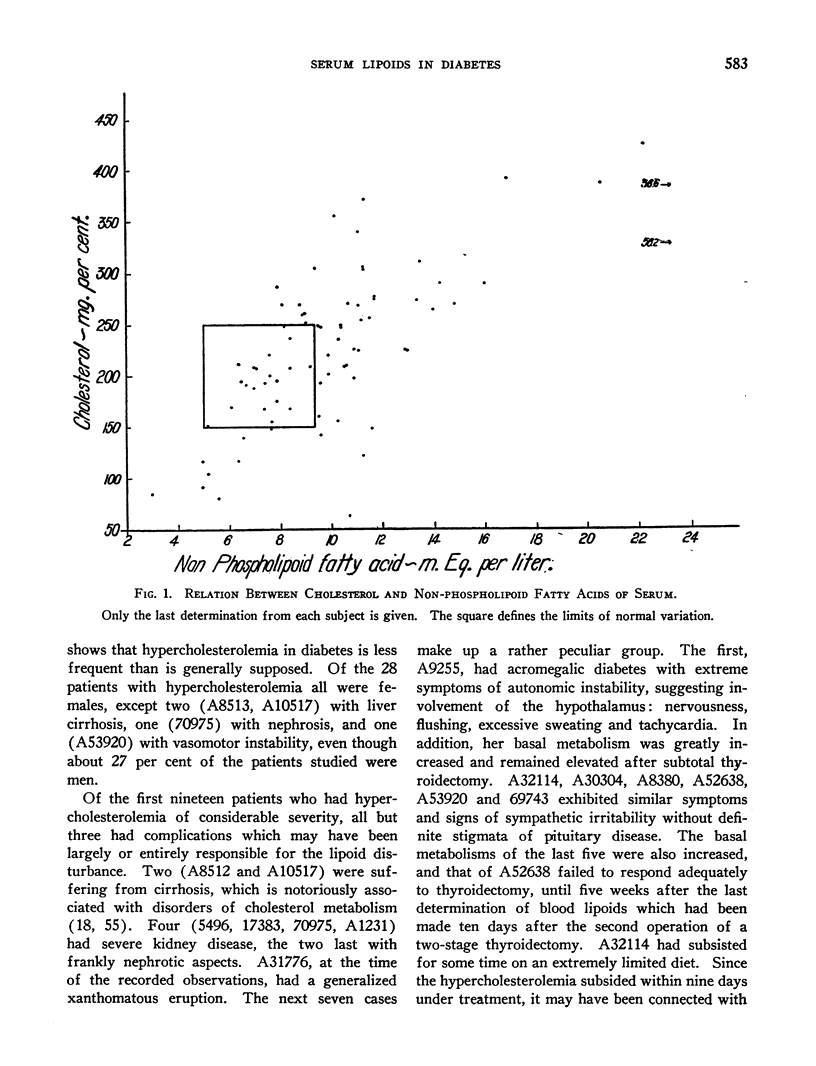
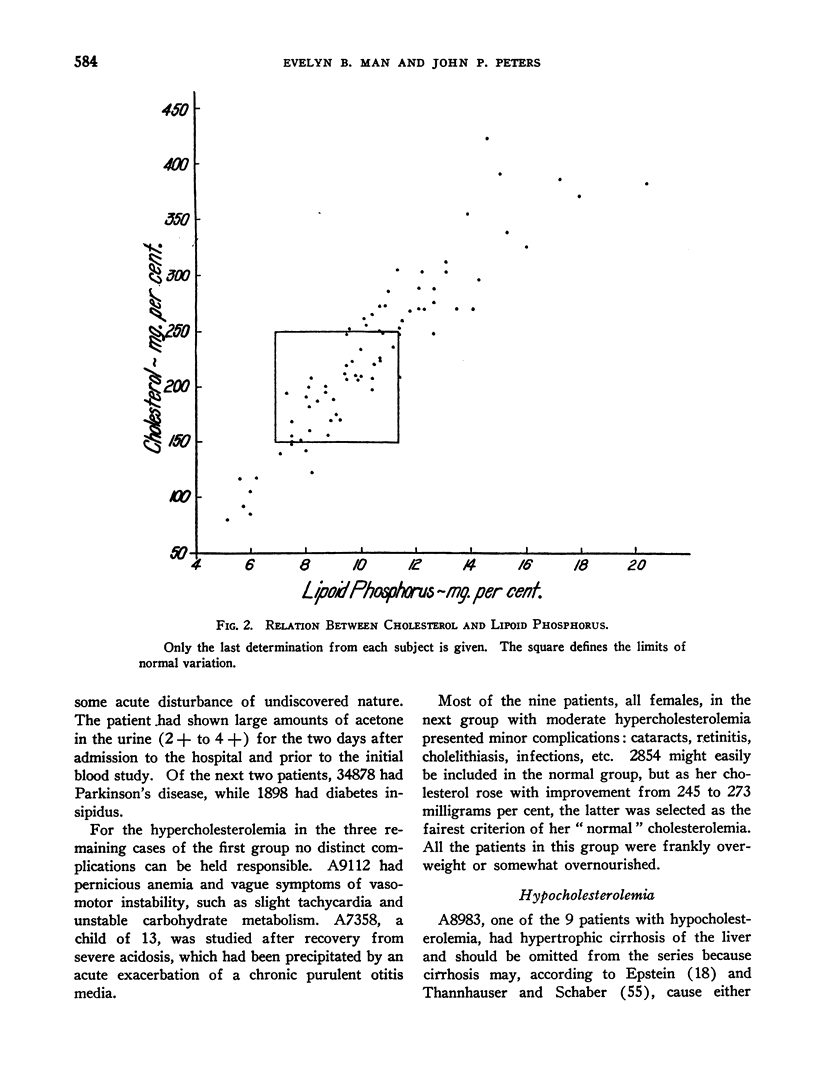
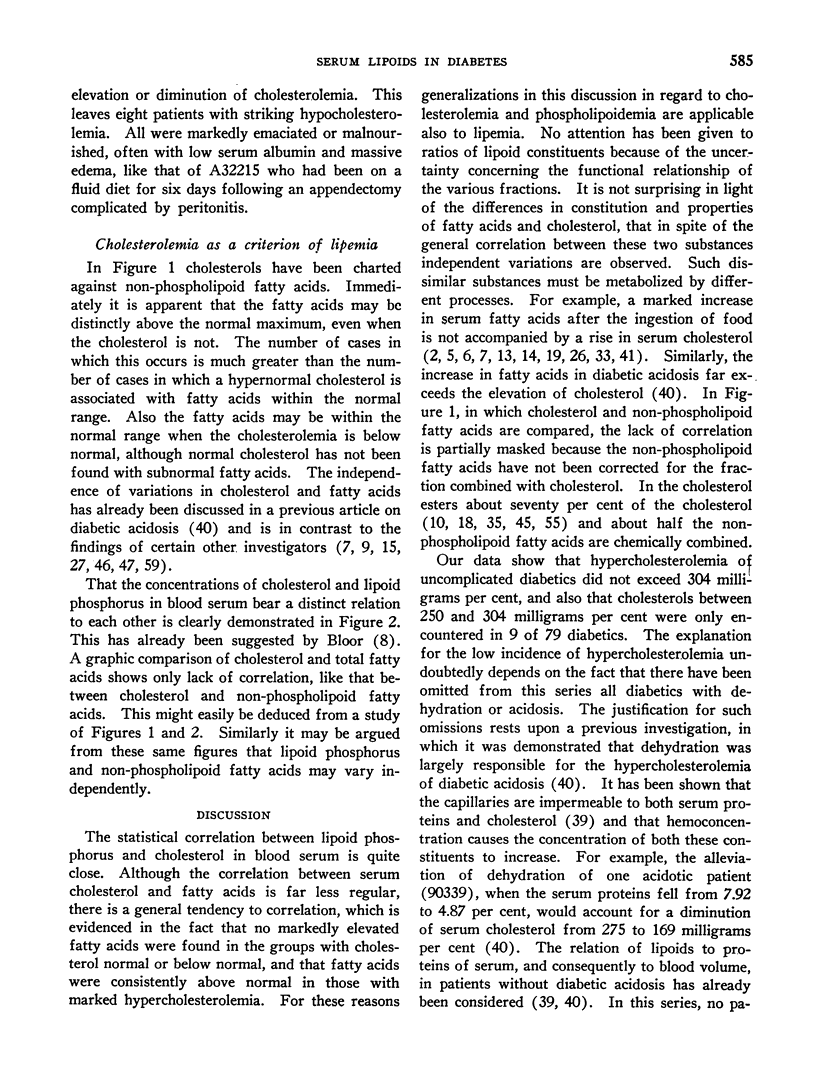
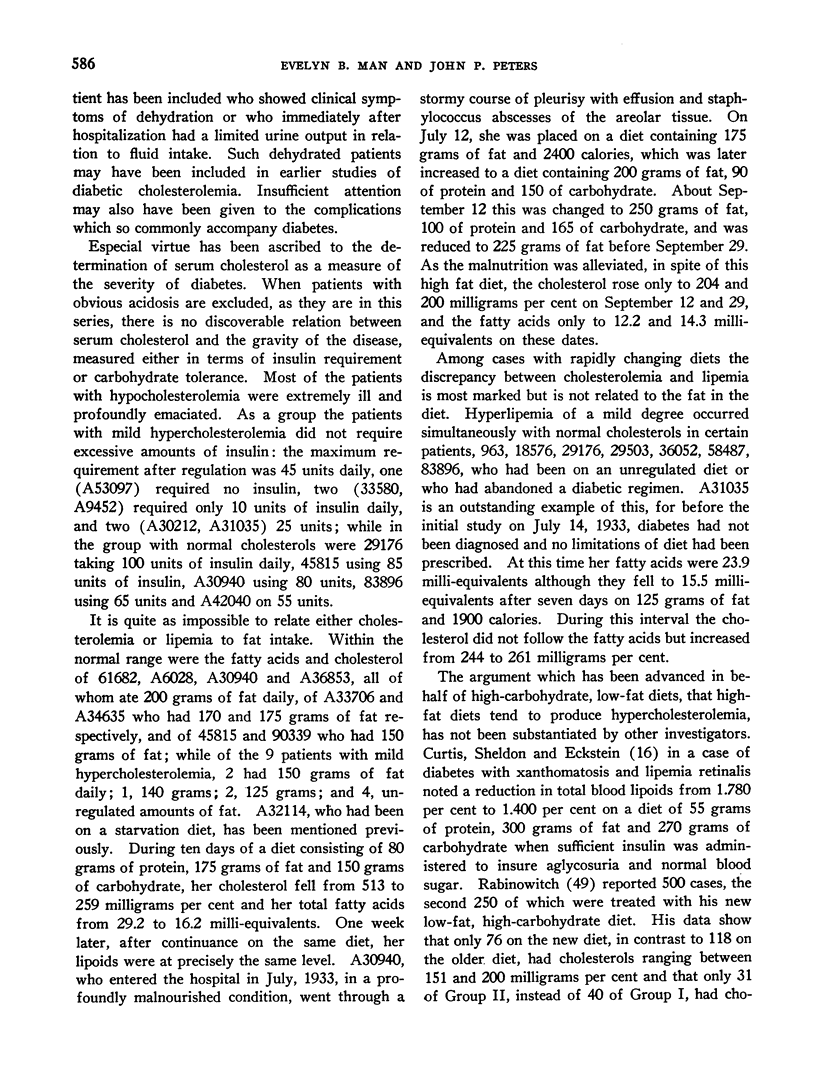
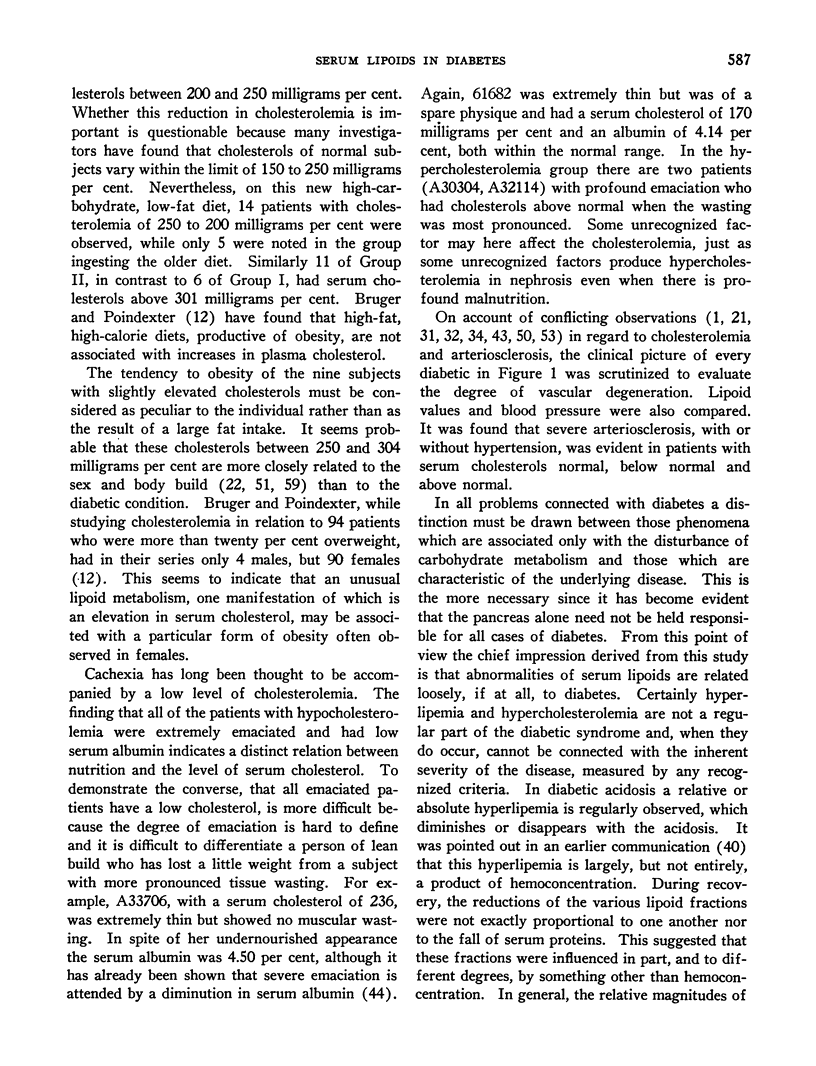
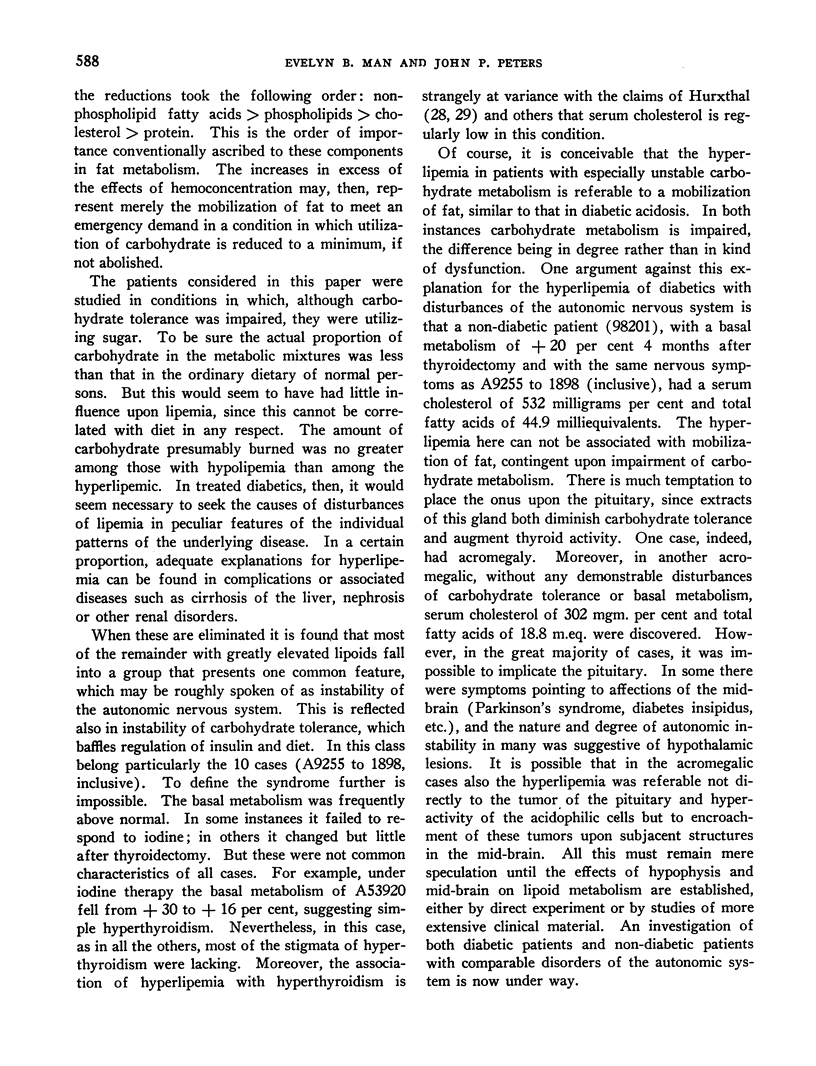
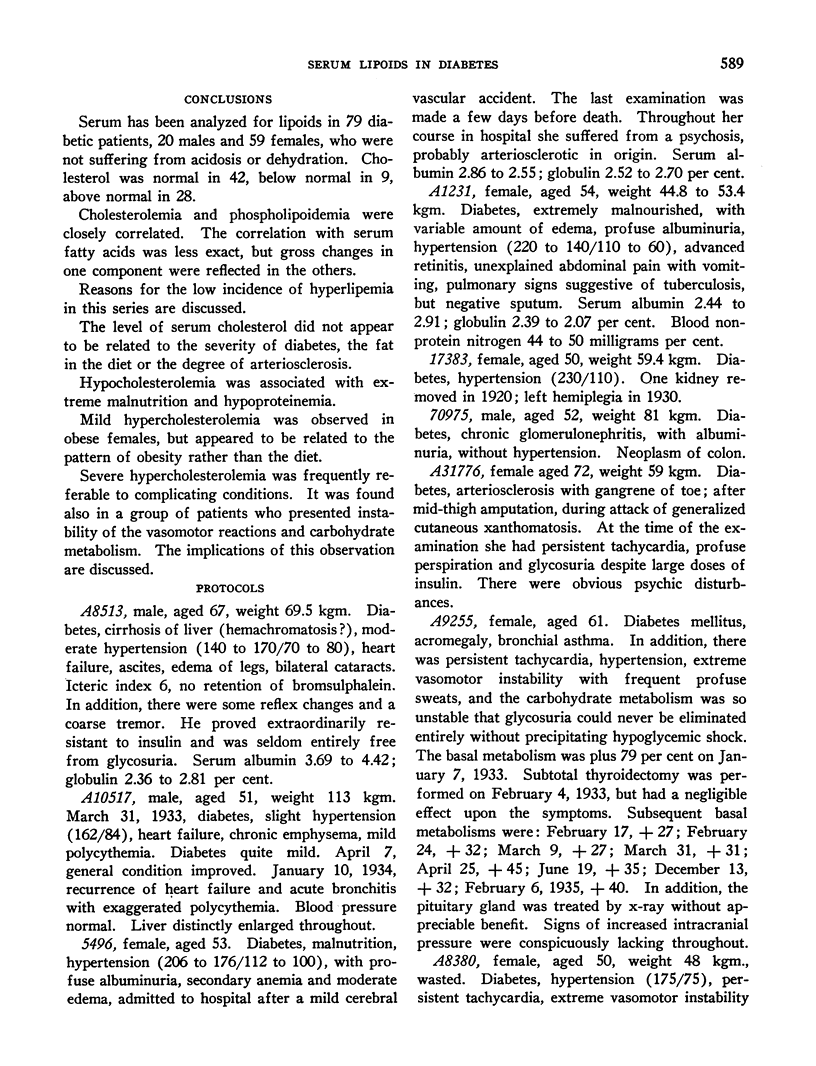
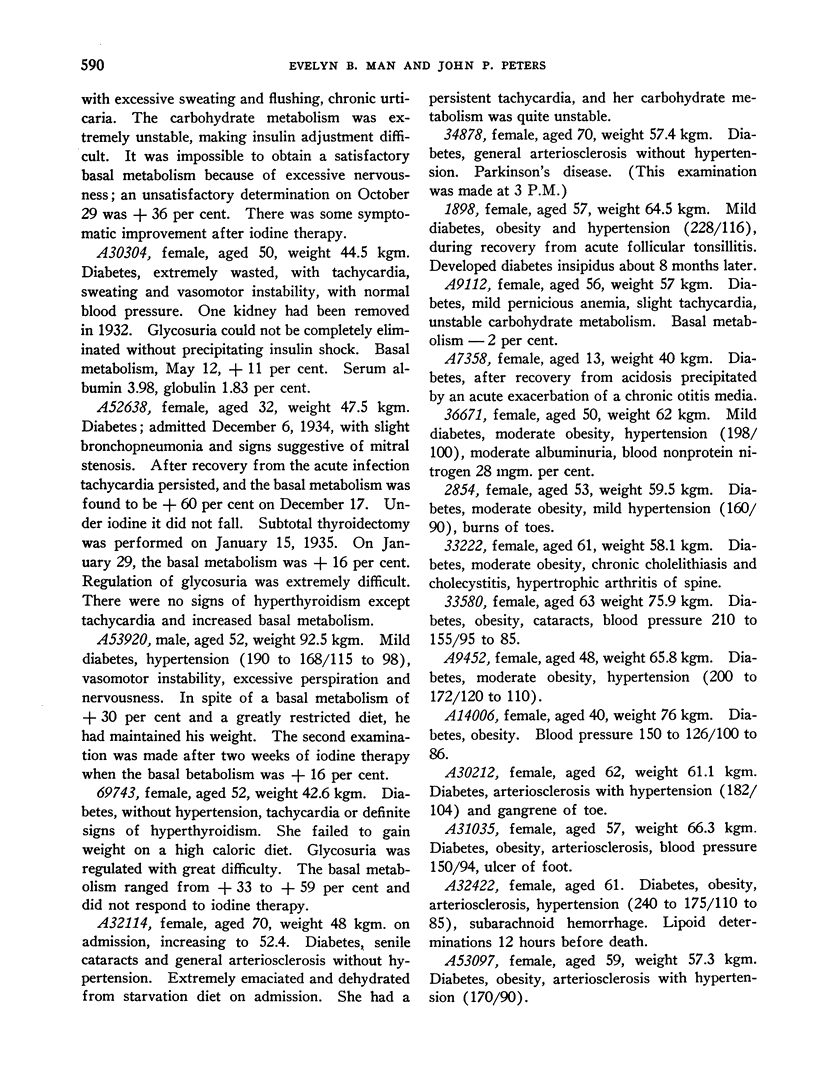
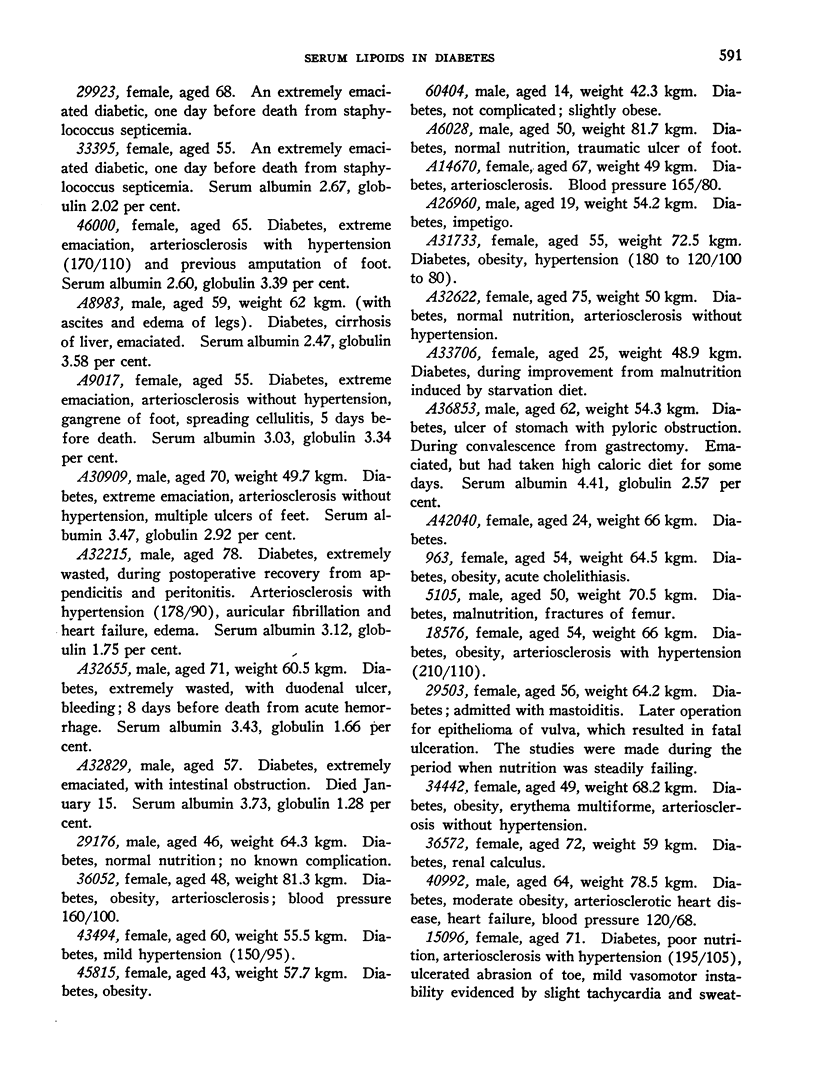
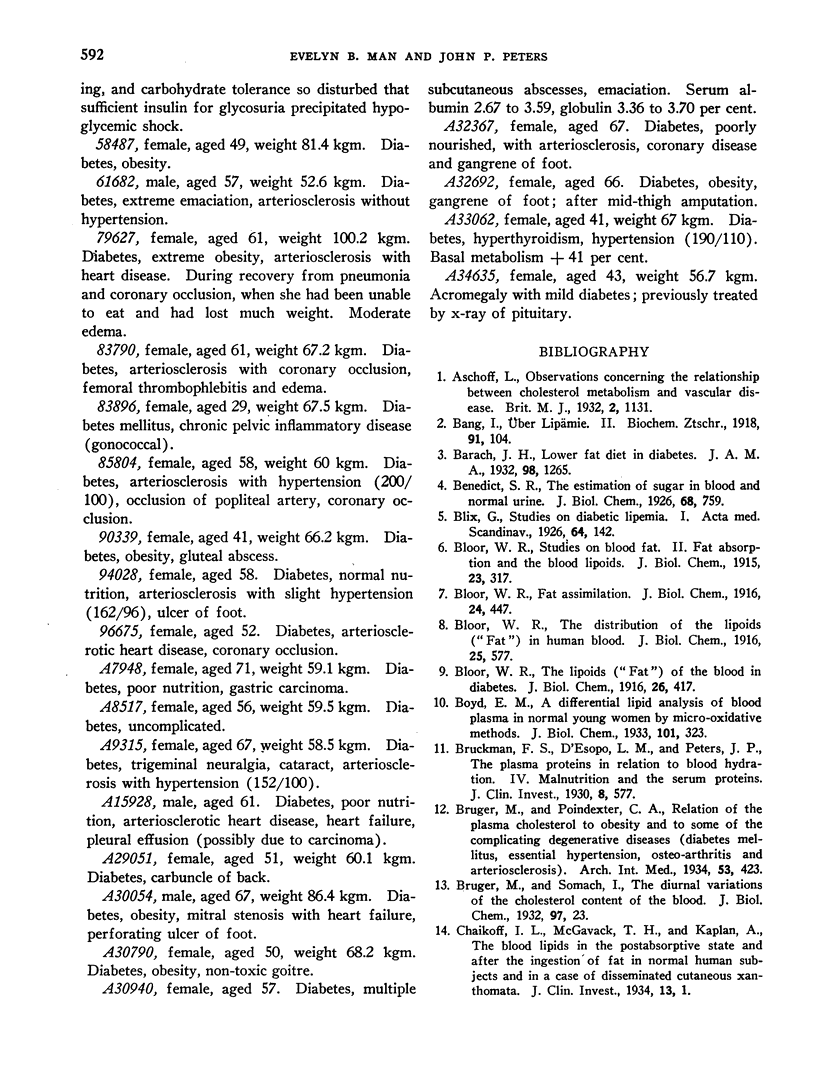
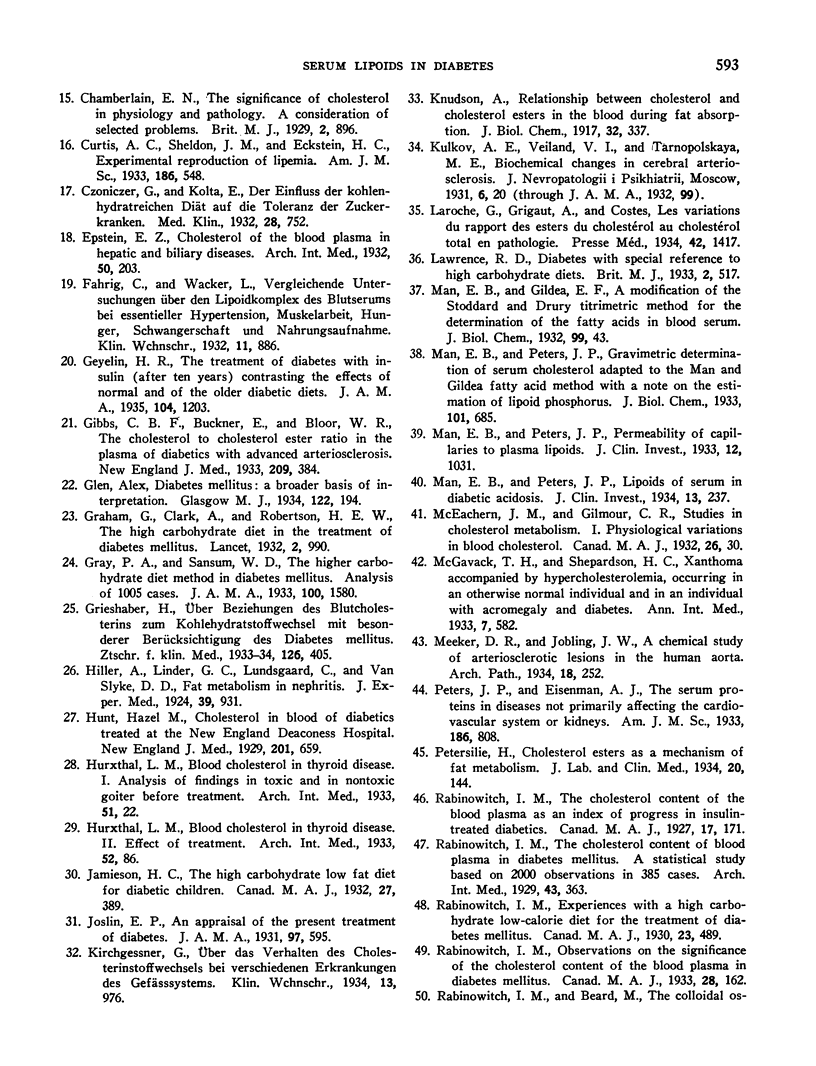
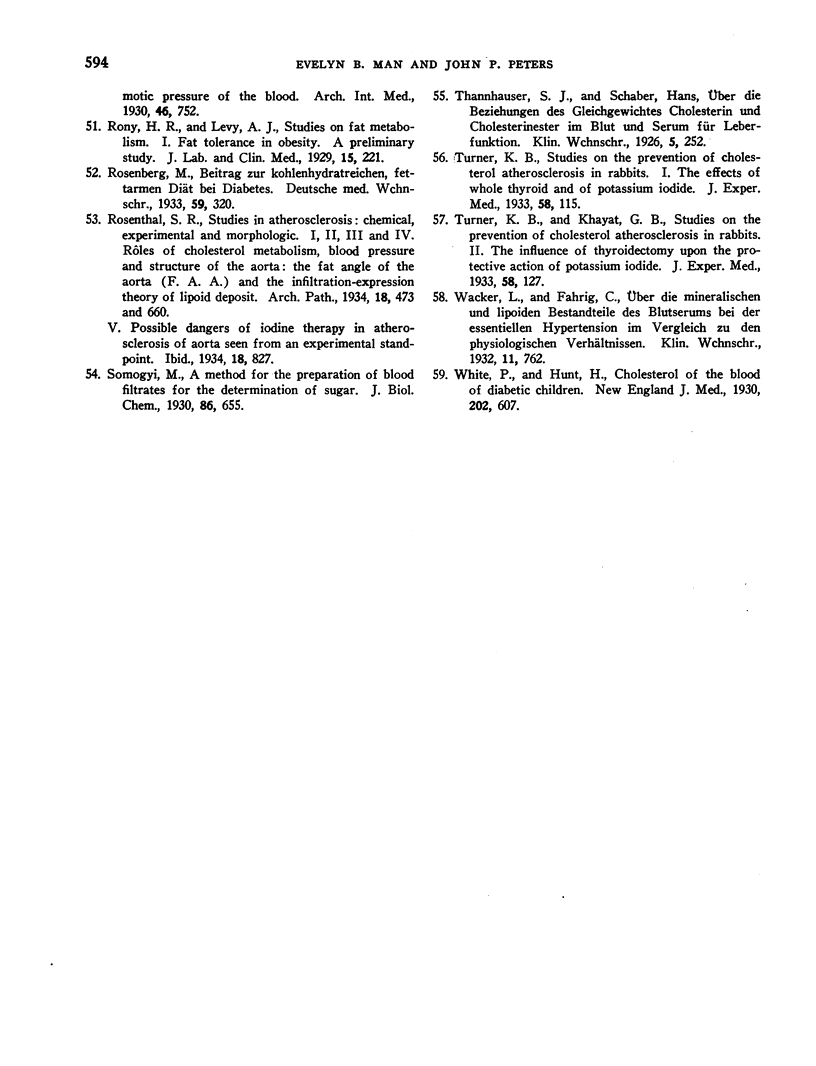
Selected References
These references are in PubMed. This may not be the complete list of references from this article.
- Bruckman F. S., D'Esopo L. M., Peters J. P. THE PLASMA PROTEINS IN RELATION TO BLOOD HYDRATION: IV. Malnutrition and the Serum Proteins. J Clin Invest. 1930 Jun;8(4):577–590. doi: 10.1172/JCI100281. [DOI] [PMC free article] [PubMed] [Google Scholar]
- Chaikoff I. L., McGavack T. H., Kaplan A. THE BLOOD LIPIDS IN THE POSTABSORPTIVE STATE AND AFTER THE INGESTION OF FAT IN NORMAL HUMAN SUBJECTS AND IN A CASE OF DISSEMINATED CUTANEOUS XANTHOMATA. J Clin Invest. 1934 Jan;13(1):1–13. doi: 10.1172/JCI100570. [DOI] [PMC free article] [PubMed] [Google Scholar]
- Jamieson H. C. THE HIGH CARBOHYDRATE LOW FAT DIET FOR DIABETIC CHILDREN. Can Med Assoc J. 1932 Oct;27(4):389–393. [PMC free article] [PubMed] [Google Scholar]
- Man E. B., Peters J. P. LIPOIDS OF SERUM IN DIABETIC ACIDOSIS. J Clin Invest. 1934 Mar;13(2):237–261. doi: 10.1172/JCI100585. [DOI] [PMC free article] [PubMed] [Google Scholar]
- Man E. B., Peters J. P. PERMEABILITY OF CAPILLARIES TO PLASMA LIPOIDS. J Clin Invest. 1933 Nov;12(6):1031–1039. doi: 10.1172/JCI100554. [DOI] [PMC free article] [PubMed] [Google Scholar]
- McEachern J. M., Gilmour C. R. STUDIES IN CHOLESTEROL METABOLISM: 1. PHYSIOLOGICAL VARIATIONS IN BLOOD CHOLESTEROL. Can Med Assoc J. 1932 Jan;26(1):30–33. [PMC free article] [PubMed] [Google Scholar]
- Rabinowitch I. M. EXPERIENCES WITH A HIGH CARBOHYDRATE-LOW CALORIE DIET FOR THE TREATMENT OF DIABETES MELLITUS. Can Med Assoc J. 1930 Oct;23(4):489–498. [PMC free article] [PubMed] [Google Scholar]
- Rabinowitch I. M. OBSERVATIONS ON THE SIGNIFICANCE OF THE CHOLESTEROL CONTENT OF THE BLOOD PLASMA IN DIABETES MELLITUS. Can Med Assoc J. 1933 Feb;28(2):162–168. [PMC free article] [PubMed] [Google Scholar]
- Rabinowitch I. M. THE CHOLESTEROL CONTENT OF THE BLOOD PLASMA AS AN INDEX OF PROGRESS IN INSULIN-TREATED DIABETICS. Can Med Assoc J. 1927 Feb;17(2):171–175. [PMC free article] [PubMed] [Google Scholar]


